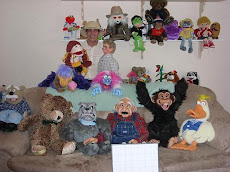Skill and determination
gotta be a funny guy
you need a ventriloquist figure
your coordination must be good
being able to study all aspects of human nature (be a copycat)
You will be constantly critiqued, be able to handle it.
Keep your day time job, because only a few of us make a living at it.
Have a memorable character
be able to take the blunt of the jokes you are the figures straight man
Get to know others in the vent world -join clubs go to conventions
use the internet to learn
Purchase courses from the better Vents
Daily Practice
Be available to donate your time at the beginning
Learn near and distant ventriloquism, but don't be in a hurry
There are two kinds of ven triloquism, near and distant. The near ventriloquist works with a wooden puppet, or "dummy," creating a separate voice that is muffled so as to appear to proceed from the figure. He tries to move his lips as little as possible. The voice seems to follow the dummy's head movements as a result of skilful voice control. The illusion is completed as the dummy's lip movements coincide with what would otherwise have been the lip movement of the ventriloquist.Distant ventriloquism, the more difficult of the two kinds, is used for creating voices quite distant from the speaker. To achieve this effect, the ventriloquist does not permit the normal current of air to pass through the whole of the opening that separates his vocal chords. Instead, the rear two-thirds of this open ing is closed firmly so that air only passes through the anterior, more narrow part of the opening. This produces an effect similar to a band playing on a parade field. Spectators see the band at one end of the field but hear the sound coming from the other end.In both near and distant ventriloquism, lip movement is minimized through skilful substitution of different sounds for the more difficult letters. For ex ample, an "eng" sound may be substituted for words containing the letter "m," or the "vhee" sound substituted for the letter "p."
The Art of Speaking
Ventriloquism is the art of speaking in such a way that the projected sound seems to originate elsewhere, usually a hand-manipulated puppet.The skill, which dates back to ancient religious rites, involves modifying one's voice through slow exhalation while speaking, minimizing the movement of the tongue and lips, and maintaining an impassive facial expression so as to focus observers' attention on the illusory source of the sound.Lip moving consonants are avoided or slurred. Where a lap-held dummy is used for a seeming conversation, the ventriloquist must alternate between his artificial, or thrown, voice and his normal voice.In the United States ventriloquists were highly popular in vaudeville acts and are still seen on variety and children's shows on television.
Psychology of Ventriloquism
Talented ventriloquists almost appear to "split their minds" as they carry on a dialogue with their other voices. This division of personality is perfectly illustrated when Edgar Bergen had his most famous "dummy," Charlie McCarthy, say, "I know what to say by reading Bergen's lips." Not only did Bergen project himself as the "dummy" but, through Charlie, he mocked his own limitations in minimizing his lip movements!The most common personality split between ventriloquists and their "familiar spirit" occurs when the figure represents the "id," or childlike side of the entertainer's personality, while the ventriloquist assumes the "super ego," or authoritative side. Total separation of personalities seems to occur and the ventriloquial illusion is heightened.
Thursday, April 2, 2009
Subscribe to:
Post Comments (Atom)








No comments:
Post a Comment